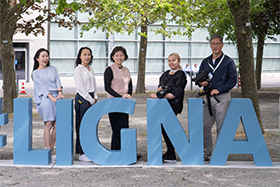Warning: Trying to access array offset on value of type null in /var/www/vhosts/woodnews.in/httpdocs/wiphp/wi_articledetail.php on line 33
Warning: Trying to access array offset on value of type null in /var/www/vhosts/woodnews.in/httpdocs/wiphp/wi_articledetail.php on line 34
Warning: Trying to access array offset on value of type null in /var/www/vhosts/woodnews.in/httpdocs/wiphp/wi_articledetail.php on line 35
Warning: Trying to access array offset on value of type null in /var/www/vhosts/woodnews.in/httpdocs/wiphp/wi_articledetail.php on line 36
Warning: Trying to access array offset on value of type null in /var/www/vhosts/woodnews.in/httpdocs/wiphp/wi_articledetail.php on line 37
Warning: Trying to access array offset on value of type null in /var/www/vhosts/woodnews.in/httpdocs/wiphp/wi_articledetail.php on line 38
Warning: Trying to access array offset on value of type null in /var/www/vhosts/woodnews.in/httpdocs/wiphp/wi_articledetail.php on line 39
Warning: Trying to access array offset on value of type null in /var/www/vhosts/woodnews.in/httpdocs/wiphp/wi_articledetail.php on line 40
Warning: Trying to access array offset on value of type null in /var/www/vhosts/woodnews.in/httpdocs/wiphp/wi_articledetail.php on line 43
Warning: Trying to access array offset on value of type null in /var/www/vhosts/woodnews.in/httpdocs/wiphp/wi_articledetail.php on line 44
No Article Added
Comments

- European symposium highlights formaldehyde emission limits
- Egger adopts holistic approach to waste management
- Weber machines dovetail into best practices
- Hymmen’s smart2i facilitates digitally mapping production
- Understanding paper impregnation
- Canada’s Western hemlock adorns Indore’s municipal hub
- ‘For customers, our lab is an open book’
- Understanding PUR glue in membrane press operations
- Taiwan’s Woodworking Machinery Industry Captivates Global Media on Opening Day of LIGNA 2025
- A circular future for fibreboard waste
- ‘Zero ThinPly’ has solid green credentials
- Wood cellulose as air cleaning material?
- Coming of age of sustainability
- TALKING MACHINES
AI, tool language take centrestage at Ligna 2025 - Intelligent packing line, sander from Woodtech
- Ornare introduces 5 new leather decors
- Richfill Edge Coat offers safer plywood finishing
- Jai’s Optimus range stays ahead of the curve
- Merino’s Acrolam sets new benchmarks in elegance
- Pytha 3D-CAD: where precision meets production
- Raucarp edge bands: simple, affordable
- US hardwoods beckon furniture makers in South
- FIMMA+ Maderalia to focus on timber construction
- Inside Biesse 2025: 10-12 July in Bengaluru
- Blum hosts design event, opens Experience Centre in Hyderabad
- Furtech 2025: growth platform for Indian furniture
- Craftsmanship, innovation at HIFF 2025
- Pidilite’s Premier Circle driving market leadership
- Events Calendar: industry fairs you must visit
- Hybrid coating boosts wood fire resistance
- Nano-iron boosts wood strength
- PSZ-cross-linked acrylic coatings for wood
- “Wood panel finishing goes beyond just looks”
- ‘Heritage, culture in advanced furniture design’
- Coding tech: mark of accountability, quality
- Greenlam scores a 1st: High Quality Product Award
- Altendorf forges ‘strong connections for strong future’
- At Ligna, Biesse reinforces multi-material concepts
- Homag shines spotlight on entire group portfolio
- SCM impresses with tech-driven showcase
- Felder fields its entire ecosystem
- Leitz integrates tools with service concepts
- Häfele turns space solutions provider
- Hettich bets on intelligent motion for evolving interiors
- Praveedh taking desi innovation to the global stage
- Turakhia shows off its Natural Veneers range
- Egger continues to ‘inspire, create, grow’
- Blum turns heads with new drawer, hinge systems

































